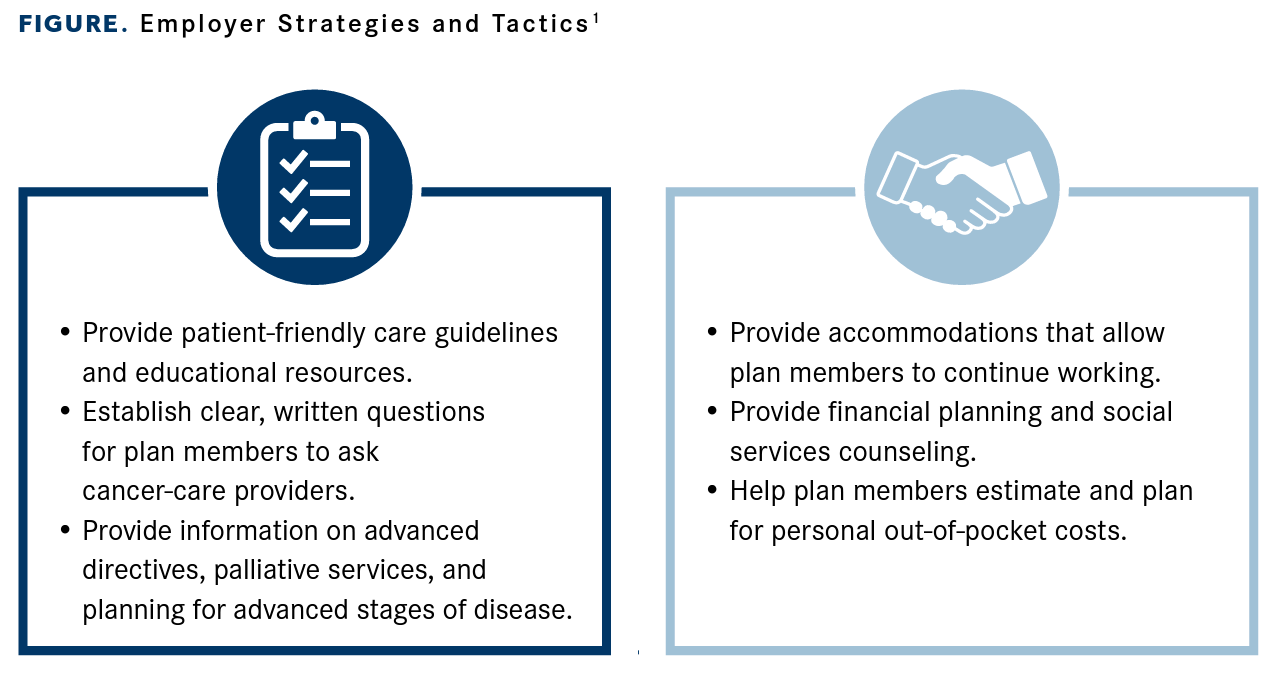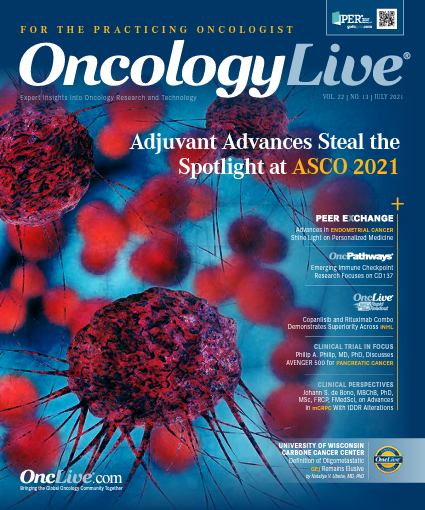Publication
Article
New Toolkit Aims to Help Employers Address Cancer Treatment
Author(s):
The National Comprehensive Cancer Network (NCCN) has launched a digital initiative to provide strategic approaches specifically geared toward employers who need to navigate a diagnosis of cancer among their staff.

The National Comprehensive Cancer Network (NCCN) has launched a digital initiative to provide strategic approaches specifically geared toward employers who need to navigate a diagnosis of cancer among their staff. The NCCN Employer Toolkit, which launched on June 2, is a free online resource that contains information such as basic medical definitions as well as suggestions on how to help employees estimate and plan for out-of-pocket costs.1
“Cancer is a very complicated disease, and it affects much more than just the patient,” Warren Smedley, vice president of The Kinetix Group and a consultant for the NCCN Employer Advisory Board, said in an interview with OncLive®. “[A diagnosis of cancer] affects a lot of people around the patient, including their employer. We set out to create some guidelines [by pulling] together a group of experts to provide those resources specifically to employers because a lot of the care decisions are made based on the structure of a benefit plan. We wanted to make sure that employers had information that would help them structure their benefit plans and structure the information that is made available to their employees and the constituents that may be impacted by a diagnosis of cancer.”
The new toolkit was conceived by the NCCN, which originally created and offered a less-comprehensive version that existed in a physical binder, offline, in 2013. The NCCN’s Employer Advisory Board solicited input from an advisory group to help with the composition process, beginning in 2017. The advisory group included physicians, benefits managers, employer advocacy groups, and representative from organizations such as the Northeast Business Group on Health, the Midwest Business Group on Health, and Florida Alliance for Healthcare Value Coalition.
The toolkit is structured around 6 guiding principles2:
- strive to deliver the highest-quality, highest-value care to plan members and their families;
- emphasize patient-centered care designed to exceed the expectations of plan members;
- promote the most appropriate, valuebased use of health care resources;
- encourage the selection of care providers with proven high quality-care;
- endeavor to minimize the complexities and barriers to accessing high-quality care; and
- empower plan members to become more engaged in improving their health.
“We want to strive for value, strive for quality, and strive to be patient centric,” Smedley said. “We created these as very high-level guiding principles to begin that discussion and then drill down as deep as we want to go within that, but [it’s important to have] a great launching point for these discussions and for a general understanding that everybody can agree on. We started very high level [when developing the toolkit].”
Each principle contains a subsection listing with employer strategies, links to resources, and tactics specific to each guiding topic. The toolkit touches on a variety of topics related to assisting employers with navigating treatment-plan decisions and initial care-centric conversations, such as clinical trial enrollment and mental health support.
“There are recommendations that are specifically things that employers can do to provide support, information, and direction to their plan members,” Smedley said. “Then there are recommendations for [employers] to give to their insurance company, third party administrator, or whoever is actually administering the claims for them to make sure that the plan understands how they want the [care of their] employees [to be handled].”
For example, the first principle—strive to deliver the highest-quality, highest-value care plan to members and their families— breaks the recommendations down into employer strategies and tactics and carrier strategies and tactics. The former provides guidance on the employer-employee relationship, outlining items to support the employee as they navigate the early stages of their cancer diagnosis and treatment. The toolkit recommends providing patientfriendly care guidelines and educational resources as well as establishing clear, written questions for employees to ask their care providers that will prepare them to establish personal goals for their treatment (Figure1). Some of these items are still under development; however, the NCCN toolkit does provide links to resources such as the NCCN Guidelines for Patients library, Cancer Hope Network, American Cancer Society treatment support resources, Patient Advocate Foundation education resource library, and more.2
Figure. Employer Strategies and Tactics1

“The employer has tools and resources and information to use directly themselves. Within each of those we then have click throughs. There are lots of great resources that are available through NCCN member institutions, advocacy groups, and others,” Smedley said. “We designed this with the idea that you can dig as deep as you’d like. For example, if you’re a well-seasoned senior benefits manager for a large employer, you might not need all the basic stuff. You would want to drill down deeper to the plan language information or something else. But if you are early in your career or experience and you need help understanding definitions, concepts, and so on, we have that as well. We tried to design it in a way that would meet the most needs of the most people.”
Focusing on the initiation of coverage selection for employees, guidance from the NCCN suggests that employers work with their carriers to provide plan members with access to support services and resources necessary to implement an approved care plan. These include coverage of survivorship care, palliative care, and hospice and end-of-life care.2
Further, the principles emphasize the importance of minimizing the complexities and barriers to high-quality care. Two key recommendations from the toolkit include ensuring that coverage is provided for care coordination and patient navigation services and, on a more personal level, providing accommodations that allow employees to continue working as much as and for as long as it is appropriate.
“More and more of the burden of care is being pushed to the employee/patient themselves,” Smedley said. “That gets complicated. Employers need these guidelines, which we will continue to add resources to, to help their plan members, patients, employees, and their loved ones manage through.”
Smedley noted the need for the toolkit to be malleable because hundreds of new therapies are in the pipeline and an increasing amount of cancer care is being pushed to the outpatient setting. The NCCN plans to continue to evolve the toolkit over time to reflect the latest trends and innovations in cancer care and continue to advance their mission of providing access to high-quality, affordable care to patients.
“Employers need more resources, and this toolkit needs to continue to expand with additional resources and additional partner organizations that would be able to provide actual hands-on resources to help patients in distress,” he said.
References
- New NCCN employer toolkit enables organizations to help workers with cancer. News release. National Comprehensive Cancer Network. June 2, 2021. Accessed June 11, 2021. https://www.prnewswire.com/news-releases/new-nccn-employer-toolkit-enables-organizations-to-help-workers-with-cancer-301304058.html
- NCCN Employer Toolkit. National Comprehensive Cancer Network. Accessed June 11, 2021. https://www.nccn.org/business-policy/business/employer-resources/employer-toolkit









